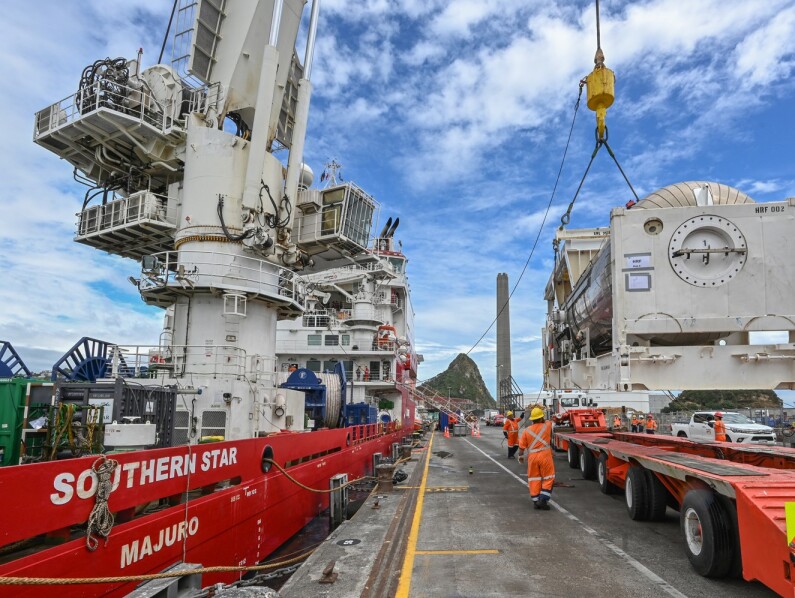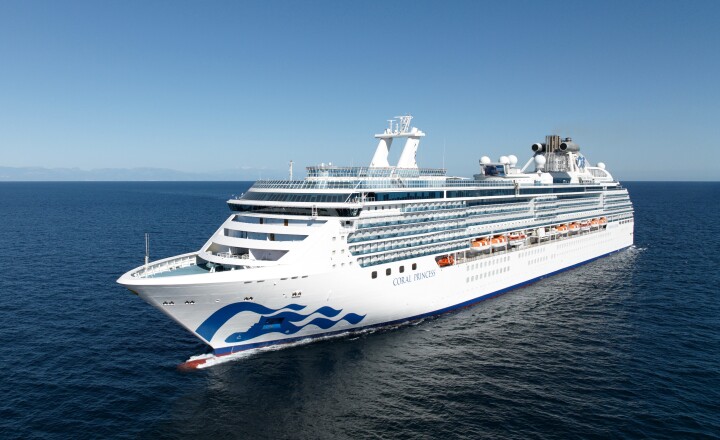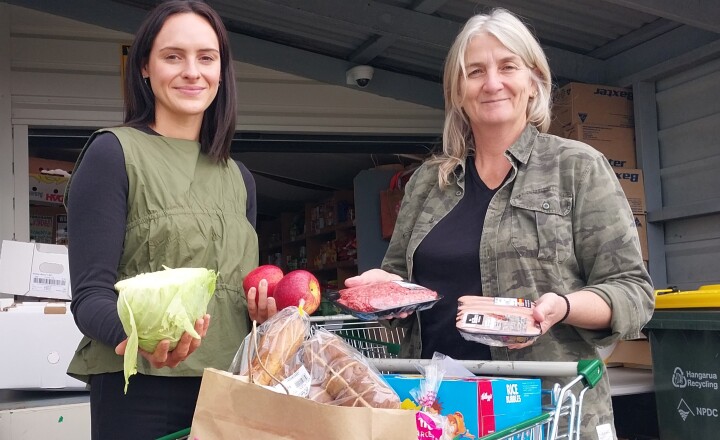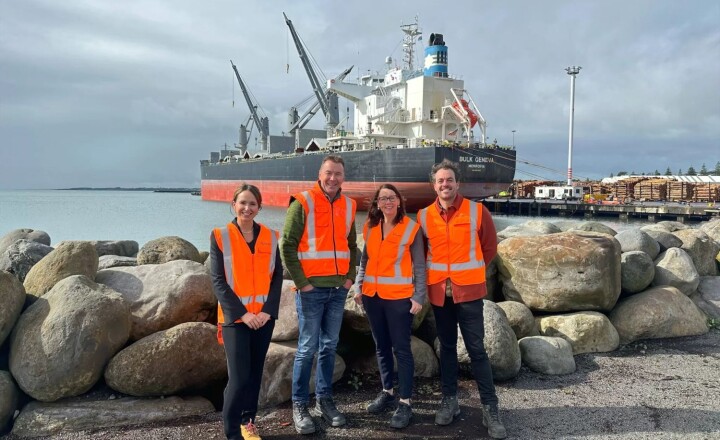
Port Taranaki is again playing a key role in support of the decommissioning of the Tui oil field, with phase two of the project now under way.
Australian-based Shelf Subsea has been contracted by the Ministry of Business, Innovation and Employment (MBIE) to carry out the latest stage of the three-phase campaign, which involves removing all the subsea equipment at the field.
Purpose built diving support vessel Southern Star arrived at Port Taranaki last week for an initial four-day visit, where it unloaded and tested emergency hyperbaric equipment, and took on diving personnel, project staff and supplies.
As it did in phase one of the decommissioning – the demobilisation of the floating production, storage and offloading vessel Umuroa – Port Taranaki will be the on-land base for the approximate two-month campaign.
During the project, Southern Star will make about five visits to port to offload and store the retrieved subsea equipment, and for resupply and crew changes. Throughout, Port Taranaki will provide berthing and pilot services, laydown areas, and general wharf services, including the use of cranes, forklifts and other specialist equipment if needed.
Shelf Subsea project manager Jack Forbes said about 40km of flow lines and 3500 tonnes of steel from subsea manifolds and mid-water arches would be prepared for recovery by underwater remotely operated vehicle (ROV) at the field and brought to Port Taranaki, where it would be unloaded and stored before being removed.
He said the initial work at the field, beginning this week, would be carried out by a 15-strong team of specialist deep-sea divers. They are to spend two weeks preparing the infrastructure at the sea bed, including checking connection points for the ROV before the retrieval work begins.
“The divers, who are all from New Zealand, will be going down about 120 metres to the sea floor for the preparatory work, and will then support some of the recovery work going forward,” Mr Forbes said.
The Southern Star has deep-sea dive decompression facilities onboard, however, should an emergency prevent the divers from returning to the ship, Shelf Subsea has stationed its Hyperbaric Reception Facility (HRF) – an on-shore emergency decompression facility – at Port Taranaki for the duration of the project.
“There are two Self-Propelled Hyperbaric Lifeboats (SPHL) on the Southern Star that are connected directly to the saturation diving system. In the event of an emergency on the vessel, the divers can transfer directly from the diving system into a lifeboat,” Mr Forbes said.
The SPHL would then be towed from the field by Port Taranaki tug Tuakana, lifted out of the water, and docked to the HRF so that the divers can decompress safely on land.
All up, 100 crew will be aboard Southern Star during the diving phase, with this reducing to 75 for the retrieval and delivery to port of the subsea equipment.
Port Taranaki head of commercial Ross Dingle said the port was pleased to be continuing its support of the Tui oil field decommissioning project.
“Being the closest port to the field and having many years’ experience supporting the energy industry, it’s fantastic that our skills, expertise, facilities and equipment are helping to ensure this phase of the project runs smoothly,” he said.
“We’ve also recently developed more laydown space within the port, so we’re pleased this will immediately be utilised by Shelf Subsea during this campaign.”
Photo: Pip Guthrie


